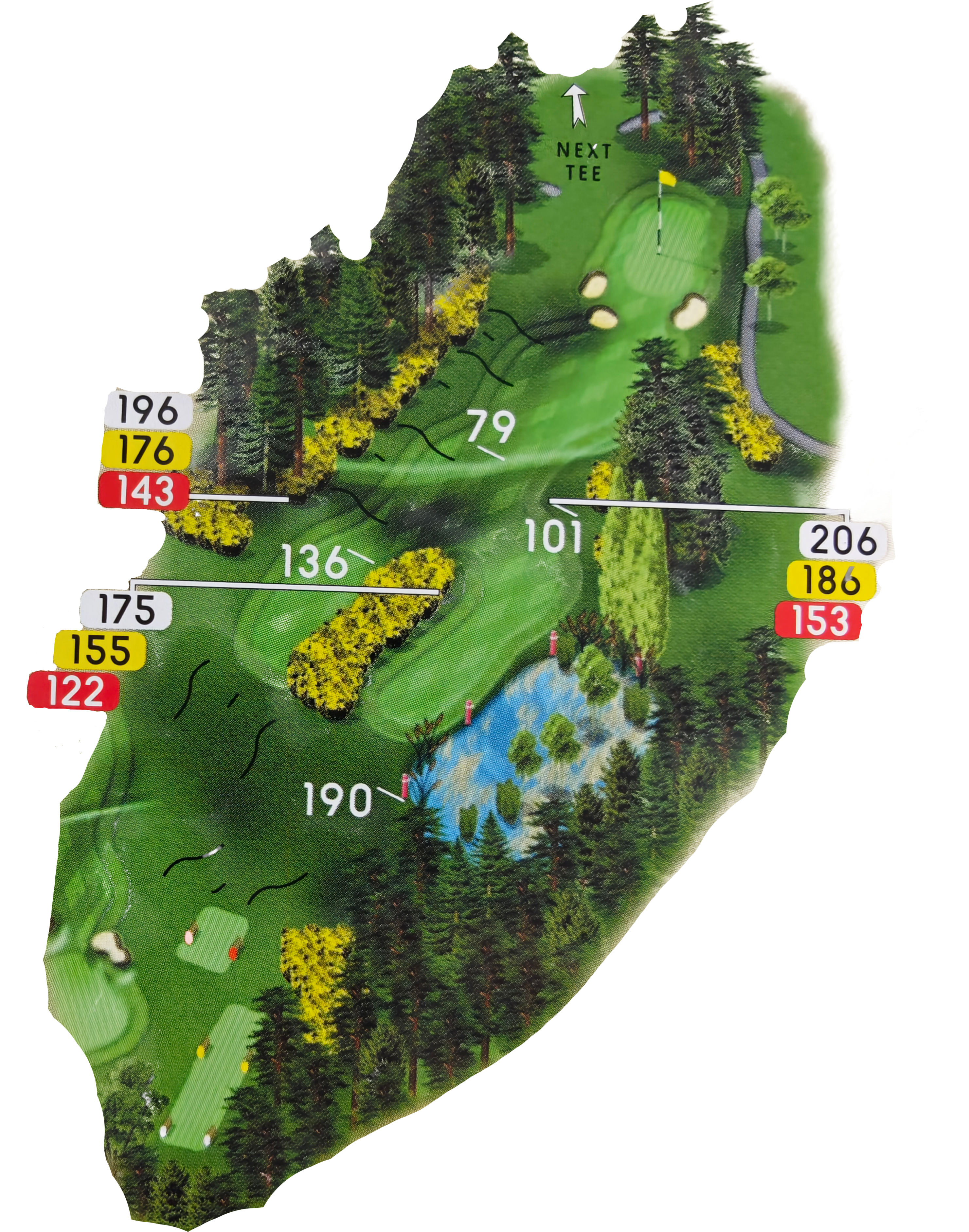Hole 16 | Pond
There are a few different options on how to play the signature 16th. Longer hitters will just go for it, straight onto the green (or the crop of trees high on the hill short right if they don’t connect!).
Many will be comfortable landing about 200 yards off the whites but be sure to carry the gorse covered hill bang in the middle of the fairway. Landing on the flat area before the dip offers a straightforward wedge to the green, over hit and you might be left in the downslope to an elevated green, not ideal.
For the shorter hitters or those intimidated by the water, there is the option to go left to the flat area at the top of the hill, however danger lurks beyond or if you hit it short right.
|
Tee |
Yards |
Par |
Index |
|
White |
306 |
4 |
16 |
|
Yellow |
288 |
4 |
16 |
|
Red |
284 |
4 |
18 |

Poor Old Sandy
Known today simply as Pond, this water feature near the 16th green has long stirred curiosity — and a touch of folklore. Some still refer to it as Sandy Mann’s Loch, a name with a story attached.
In the Forres Golf Club Centenary Book, there’s mention of excavation work carried out in the 1980s to connect the clubhouse to the mains sewage system. During the dig, workers uncovered horse bones just a short distance from the clubhouse — a link, perhaps, to the site’s earlier use as Scraphard Farm.
The book also recounts a tale passed down over the years: that of Sandy Mann, a farm worker who, legend has it, was last seen riding his horse and cart toward the pond — never to be seen again. Whether true or tale, the story adds a sense of mystery to a quiet corner of the course.
Beyond its folklore, the pond plays a vital role in local biodiversity. In 2015, conservation work was undertaken to protect a small population of Great Crested Newts found in the pond — a rare species in the Highlands. Research found that the addition of a second pond on the course (the one between hole 17 and 14 would contribute significantly to connecting the populations of Newts at Sanquhar and the 16th Pond. Work was paid for by Scottish Natural Heritage and the newts are flourishing ti this day.
The lower fairway on this hole is a man made feature and was made into the wide ribbon that now appears by dredging some of the pond. The uneven surface is partly due to the subsoil being compacted with old trees and roots from the pond. The whereabouts of Sandy Mann however is still not confirmed.
